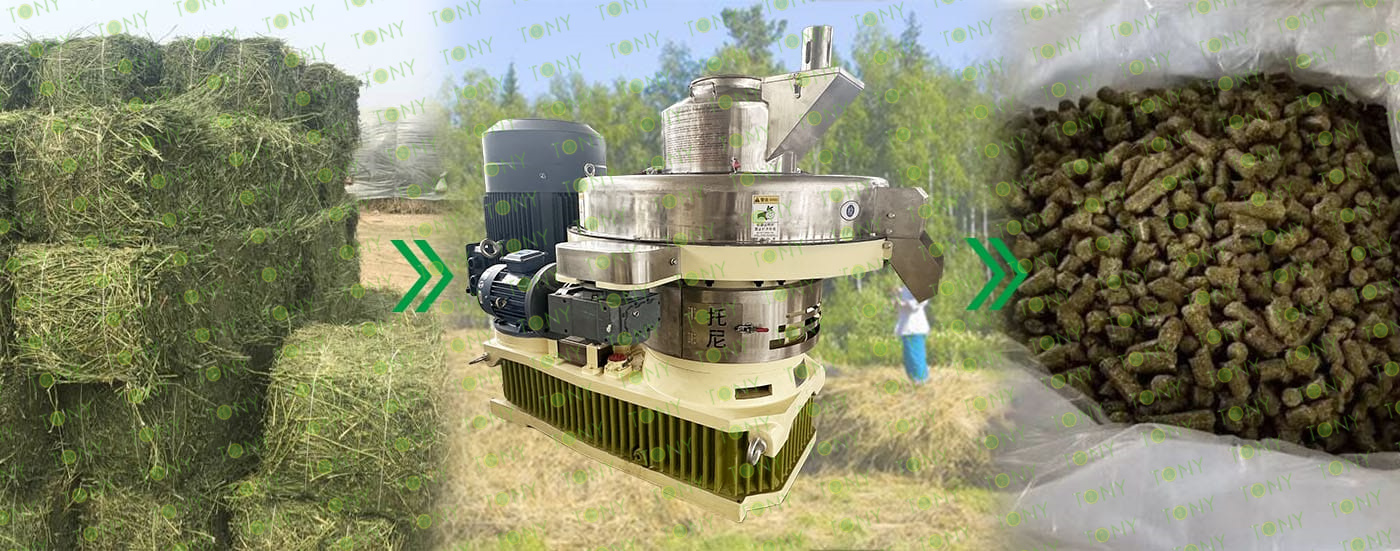Many customers and friends who are engaged in the biomass pellet fuel industry have already established processing plants. However, in the early stage of their career, they often encounter an awkward situation: they cannot produce biomass pellets or the output does not meet the standards. This made the customer friends very anxious and they began to question the equipment issues, with doubts in their minds: "What's wrong with my pellet machine?"
When encountering such a problem, TONY suggests that you don't worry for now. After all, you are just starting out in the industry and are still in the exploratory stage. It's quite normal to encounter problems.
TONY Biomass pellet machine manufacturer has helped many customers establish their pellet factories. According to our experience, there are five main reasons that can affect the output of pellet factories:
1. The compression ratio of the ring die does not match.
If you use a new ring mold, you need to break it in before operating the granulator. Simply put, it is to grind it with oil (a mixture of wood chips and engine oil), and the expected grinding time is within 20 to 40 minutes. Secondly, it is necessary to check whether the compression ratio is suitable for the raw materials. If the compression ratio is too large, the resistance of the material passing through the die hole will increase, and the resulting particles will have a higher density. Due to the need for more power, the output of particles will decrease. Conversely, if the compression ratio is too small, it will be difficult to form. If the compression ratio is found to be incorrect, a suitable mold needs to be replaced or the raw materials of this batch should be replaced.
2. The diameter of the ring die and the wear of the pressure roller.
For annular molds that have been in use for a long time, it is necessary to check whether there is any wear on the inner wall of the mold hole. It is also necessary to check whether the pressure roller is severely worn. Severe wear and tear can have a huge impact on the output of particles. For severely worn ring dies, holes can be re-drilled. For the severely worn roller skin, it is recommended that you directly replace it with a new one. Do not use the severely worn roller skin for production anymore. The efficiency is slow and it is not worth it.

3. Adjust the gap between the ring die and the pressure roller correctly.
There is a gap requirement between the ring die and the pressure roller, and this gap should be approximately 0.5mm to 0.8mm. If the gap is too narrow, it will increase the wear of the pressure roller and the mold, and shorten the service life. However, excessive clearance will cause the pressure roller to slip and reduce the output capacity of the particles.
4. The feeding conditions are inappropriate.
Before entering the granulation process, special attention should be paid to the particle size and moisture content of the raw materials. Some raw materials are very rough, such as peanut shell raw materials. They can be directly pressed without being crushed, but this will increase the work done by the pellet machine and reduce the output. If there is too much moisture in the raw materials, they may get stuck in the pressing chamber of the ring die, thereby reducing the output of granules.
5. The raw materials inside the ring die are unevenly distributed.
In conclusion, to fully master the production process of biomass pellets, long-term accumulation and experience are required. And we, TONY, are willing to make progress and develop together with all colleagues.
Choosing a reliable biomass pellet machine manufacturer is a very important matter, which can solve the vast majority of problems from pre-sale to after-sale service. TONY, 20 years of experience in mechanical processing. Seeing is believing. It's a good idea to compare several pellet machine manufacturers and not lose out!





















